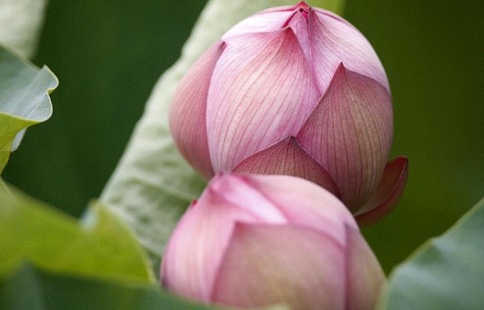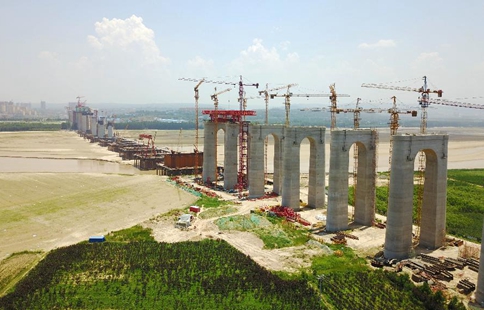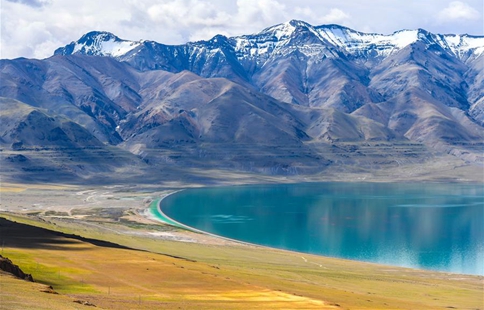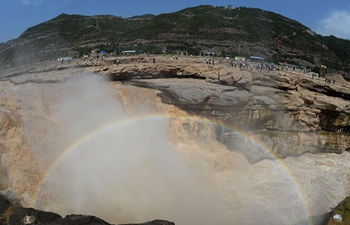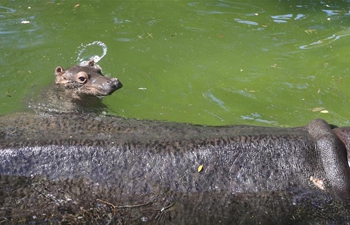NAIROBI, July 13 (Xinhua) -- James Mwenda picks a bunch of napier grass from a pile harvested from his three acres in Meru County, eastern Kenya, and chops into small pieces using a chaff cutter.
He repeats the process several times before ending up with a huge pile of napier grass cut into 2cm pieces.
The smallholder dairy farmer who keeps eight Friesian cows thereafter spreads out the chopped napier grass on a plastic sheet spread in a half-metre deep rectangular pit dug out in the ground.
Mwenda is in the process of making silage, and has perfected the art that farmers visit him for theoretical and practical lessons.
"If you are a dairy farmer and you want to have feed supply throughout the year, then silage is the way to go," he said recently in Meru, adding that one spreads the chopped fodder on the sheet as they stump on it to remove air and thereafter add diluted molasses to aid in fermentation.
Later, the mixture is covered and would be ready for use after about a month and can stay in the pit for up to a year.
The farmer normally makes silage that lasts him up to six months cushioning his animals from a dry season.
Silage is a feed that hundreds of smallholder dairy farmers in the East African nation are currently turning to beat erratic weather and make their businesses profitable.
The farmers are learning the silage-making process from colleagues or agricultural institutions as the country experiences a rather unpredictable weather that has affected both crop and livestock farming.
This year for instance, the Meteorological Department predicted that the long rains season would start in March and end in May.
However, in some parts of the country, the rains did not start until late April and stopped even before the end of May. The result is that crops in particular maize has withered in several areas across the East African nation.
For dairy farmers, a prolonged dry period led to decline of fodder, pushing farmers to hay that was going for up to 4 U.S. dollars per bale. A wheelbarrow of napier grass, on the other hand, was being sold at 2.4 dollars, making dairy farming an expensive affair.
Silage is, therefore, the best option especially for smallholder dairy farmers seeking to overcome effects of climate change.
"The trick is that you grow fodder like napier grass or maize during the rainy season, and harvest and preserve to use during the dry weather. If you perfect the practice, your animals will never lack feeds thus guaranteeing you high milk production," explained Mwenda, who milks 120 litres and sells at 0.3 dollars a litre to a cooperative society in the region.
Esther Koech, a farmer in Uasin Gishu County in the Rift Valley noted that currently she has two bunkers where she preserves her silage.
"I have ten dairy cows, of which I milk eight. I learned it the hard way in 2015 when it failed to rain as expected and animal feeds were hard to come by. My milk production dropped from about 20 litres per cow to ten because I had no fodder. I had to sell my four animals to reduce the burden of feeding them," she said.
She learnt how to make silage from a farmers' group in the region and since then, she has never turned back.
"Right now I have silage that my cows would feed until December. This gives me peace of mind since I am not worried of what they would eat. My highest milker offers 28 litres and my lowest 15 and this has been constant for some time because of silage which I supplement with dairy meal," she said, noting she feeds her animals twice, early morning and late evening.
Simon Muriuki, a livestock extension officer in Kiambu on the outskirts of Nairobi noted that without making silage, it is now difficult for any farmer to run a profitable venture.
"Silage making is both an art and a science which farmers must understand so that they do not affect their animals as improper preparation can lead to diseases. The fodder should be harvested and dried in the sun for about a day before being used to make silage," he said, adding the feed is nutritious and digestible ensuring high milk production during the dry season.
The rising demand for silage has led to business opportunities for some farmers, who make it in bulk and selling to those who do not have spaces to make it or do not know how to do it.




